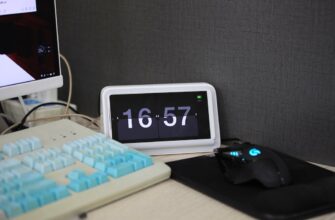👑 Airdrop Royalty: $RESOLV Awaits!
💰 Want to build your crypto empire? Start with the free $RESOLV airdrop!
🏆 A golden chance to grow your wallet — no cost, no catch.
📅 You’ve got 30 days after registering. Don't wait too long!
🌟 Be among the first movers and enjoy the biggest rewards.
🚀 This is your gateway to potential wealth in Web3.
## Why Hardware Wallets Are Essential for NFT Security
Non-fungible tokens (NFTs) represent unique digital assets worth millions, making them prime targets for hackers. Hardware wallets provide military-grade security by storing private keys offline in a physical device, completely isolating them from internet vulnerabilities. Unlike software wallets or exchange accounts, these “cold storage” solutions ensure your Bored Apes and CryptoPunks remain inaccessible to remote attacks, even if your computer is compromised.
## Top 5 Hardware Wallets for NFT Collectors
1. **Ledger Nano X** – Industry leader with Bluetooth connectivity and support for 5,500+ coins/NFTs via Ledger Live app. Features CC EAL6+ certified secure chip and compatibility with MetaMask/OpenSea.
2. **Trezor Model T** – Touchscreen interface with open-source firmware. Supports ERC-721/1155 NFTs through Trezor Suite and third-party wallets like MyEtherWallet.
3. **Ellipal Titan 2.0** – Air-gapped (100% offline) metal wallet with large touchscreen. Self-custody solution for Ethereum, Solana, and Polygon NFTs without cables.
4. **SafePal S1** – Affordable option with QR-code air-gapped transactions. Integrates with Binance NFT marketplace and supports multi-chain NFTs.
5. **Keystone Pro** – Biometric security with fingerprint sensor. Features EAL5+ secure element and broad Web3 compatibility via MetaMask integration.
## Critical Features for NFT Hardware Wallets
– **Multi-Chain Support**: Must handle Ethereum, Solana, Polygon, and other NFT-heavy blockchains
– **Secure Element (SE) Chip**: Hardware-based encryption (EAL5+ or higher certification)
– **Companion App Integration**: Seamless connection to marketplaces like OpenSea and Magic Eden
– **Recovery Seed Backup**: 12-24 word phrase for asset restoration
– **Tamper-Proof Design**: Anti-tamper seals and self-destruct mechanisms
## Setting Up Your NFT Hardware Wallet: Step-by-Step
1. Unbox and verify anti-tamper seals
2. Generate recovery seed phrase (write on paper, never digitally)
3. Set 6+ digit PIN code
4. Install companion app (Ledger Live, Trezor Suite, etc.)
5. Connect wallet via USB/Bluetooth/QR
6. Add NFT-supported blockchain accounts (Ethereum, Solana)
7. Transfer NFTs from exchange/hot wallet
## NFT Security Best Practices
– Always verify transaction details on your hardware wallet screen
– Store recovery phrase in fireproof safe or metal backup device
– Enable passphrase feature for hidden wallets
– Regularly update firmware to patch vulnerabilities
– Use separate wallets for trading vs. long-term collecting
## Hardware Wallet NFT FAQ
**Q: Can I view my NFTs directly on the hardware wallet?**
A: No, hardware wallets store keys only. View NFTs through connected apps like Ledger Live or MetaMask.
**Q: What if my hardware wallet breaks or gets lost?**
A: Your assets remain safe. Simply restore access using your recovery phrase on a new device.
**Q: Are hardware wallets compatible with Solana NFTs?**
A: Yes, Ledger, Ellipal, and SafePal all support Solana-based NFTs through Phantom integration.
**Q: How do I sell NFTs stored on a hardware wallet?**
A: Connect wallet to marketplace (e.g., OpenSea), approve the transaction on your device when prompted.
**Q: Can I use one wallet for both crypto and NFTs?**
A: Absolutely. All recommended wallets support cryptocurrencies and NFTs simultaneously.
## Final Thoughts
Protecting NFT investments demands bank-level security. By choosing a hardware wallet with robust encryption, multi-chain flexibility, and intuitive interfaces, collectors safeguard digital assets against evolving threats. Whether you’re holding a single CryptoKitty or a vault of blue-chip NFTs, offline storage remains the undisputed security standard in the Web3 era.








